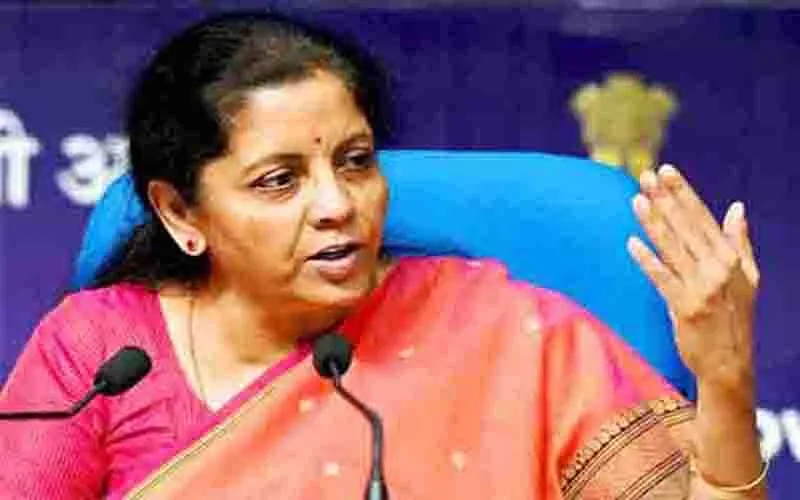The idea of Atma Nirbhar Bharat (Self-reliant India) was unfolded by the Prime Minister a few days back. It was coupled with the so-called mega economic package which was subsequently unfurled by the Fin Min in five tranches. A figure of Rs 20 lakh crores (10% of GDP) was spoken of. Looking at the figure it appears to be a gigantic carton of cash. But, the details make it clear that it’s actually only roughly 2.5 lakh crore (1.5% of GDP). The package has been exaggerated, overstated and cleverly crafted to befool the common masses. The devil lies in the details. Moreover, the package is unlikely going to deal with the issue that the country faces this time—the crippled demand side.
To understand the actual government spending and the truth of the package, let’s analyse the tranches one by one. It’s this breaking down of the numbers that would expose the cleverly crafted prank of Rs 20 lakh crores.
The first tranche: The first part of the bundle is to the tune of Rs 5.9 lakh crores. Its cornerstone is the Rs 3 lakh crore collateral-free loans to Micro, Small and Medium Enterprises (MSMEs). To put in in a comprehensive form, the banks would extend loans to small businesses without any security and guarantee upto Rs 25 crores. The government would only cover these loans with its guarantee. This means that the government would pay the outstanding to the bank in case the borrower defaults. But, it must be comprehended that it’s not the government that is providing money to these enterprises; it is the people’s money that banks would lend. And this money has to be repaid with an interest. There is no actual cash expenditure being made by the government.
It would, on the contrary, deepen the terrible debt cycle. Too much loaning and that too without security are detrimental to both the bank and the borrower in the long run. Apart from that, our experience shows that such a scheme would encourage every Tom and Harry to approach banks with the intention of default because you can’t ask for a security or a guarantee. This would be bad and not beneficial.
Likewise, the government has decided to pay their liabilities owed to charitable trusts, partnerships, proprietorships, trusts, non-corporate businesses, co-operatives and so on. Here again, it is not the government that is spending anything. It was the government’s liability. These are the pending refunds owed to such entities by the government. How does that qualify to be a package?
The government has also decided to deduct comparatively smaller parts of the salaries towards Employee Provident Fund (EPF). Now only 10% of the Basic and Dearness Allowance (DA) would be deducted towards EPF. Till now, it has been 12%. It has also given a tax holiday of some months in case of Tax Deducted at Source (TDS) on bank deposits. It doesn’t, however, mean that less tax will have to be paid, it just means that the tax will not have to be paid now but later. On the same lines, loans will be given to power distribution companies against what the government owes them. This amounts to around Rs 90,000/- crores. It means these companies shall be given loans against their own money.
Apart from this, the earlier relief measures of Rs 1.7 lakh crores announced by the government on March 26, 2020, are included in this so-called new package.
The second tranche: The second phase primarily deals with the scheme of interest subvention. It also includes credit facilities to street vendors and farmers. Fin Min also announced concessional credit to Kisan Credit Card (KCC) holders. Other credit facilities to encourage building homes were also put forth. The emphasis of this tranche has been on migrants, KCC and credit to the smallest businesses.
Again, the government is not paying anything out of its pocket. It’s the banking system that has to lend and offer interest subventions.
The third tranche: The third component of Rs 1.5 lakh crores comprises investments to be made in future in farm infrastructure, fisheries, food processing, animal husbandry, beekeeping, etc. These are the future proposals of the government. Nothing is being invested now. There are no clear measures to address the current scenario of the farm sector.
The fourth tranche: Legislative, financial and reform measures in mining, defence manufacturing, airspace, social infrastructure, space, etc constitute the cornerstones of this component. About Rs 50,000/- crores have been allocated for this.
The fifth tranche: The fifth and the final package unfolded by the Fin Min revolves around Mahatma Gandhi National Rural Employment Guarantee Act (MGNREGA). It also includes education and health. Another Rs 1 lakh crore is the size of the allotment to this tranche.
Apart from the allocations and packages announced in the five days, the government has illogically included the earlier measures of Rs 1.7 lakh crores and RBI’s measures of Rs 8 lakh crores in this package. The RBI measures were those in which rates were cut for different parameters concerning banks. Again, the government didn’t spend any bucks here out of its pocket. It was the RBI that eased some bank rates giving away more inflow of money in the economy through rate cuts. How can the government call such a package a Rs 20 lakh crore package when they are actually spending not more than Rs 2.5 lakh crores? This adds up to only 1.5% of GDP—the sum-total value of all products and services of India for a year.
Postscript: The Covid 19 pandemic has brought numerous problems. To the economy, it has hit the hardest blow of demand crunch. Therefore, unless and until the demand collapse problem is addressed, such batches will be of no benefit. The real solution lies in incentivising the demand side. Only then, the country would prosper and become Atma Nirbhar (self-reliant).
(The author, an MBA, works in the middle management of a PSU. The views are personal.)






